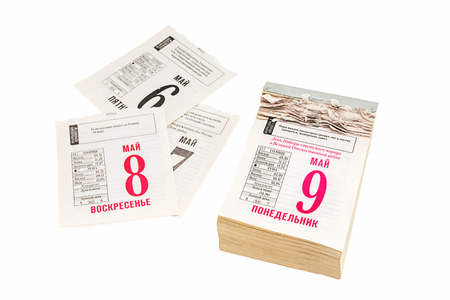Introduction to Tarot Cleansing and Storage in British Homes
Tarot cards have long held a special place in both mystical practice and personal reflection. In the UK, interest in tarot reading has steadily grown, with many Britons embracing the tradition not only as a spiritual pursuit but also as a mindful hobby. Whether you keep your cards on a Victorian mantelpiece or tucked away in a modern flat, understanding why cleansing and proper storage are essential is key to preserving the cards’ energy and longevity. British homes—often defined by their blend of history, character, and practicality—offer unique settings for these rituals. Many enthusiasts in Britain believe that regular cleansing removes negative energies accumulated during readings, ensuring clarity and accuracy in future sessions. Likewise, storing tarot decks respectfully reflects a broader cultural appreciation for orderliness and personal space, common across British households. This approach echoes traditional values of care and preservation, seen from antique collections to cherished family heirlooms. As we explore step-by-step methods tailored for typical British environments, you’ll discover how small habits rooted in local beliefs can enhance both your tarot practice and the atmosphere of your home.
2. Choosing the Right Time and Place
When it comes to cleansing and storing your tarot cards in a typical British home, selecting an appropriate time and place is essential for preserving their energy and ensuring your rituals remain meaningful. Unlike some cultures where outdoor space or certain seasons play a bigger role, British homes often present unique considerations such as limited privacy, unpredictable weather, and shared living areas. Let’s break down how to make the best choices within this context.
Finding the Ideal Moment
Timing is everything when it comes to spiritual practices. In a British setting, you might wish to align your cleansing with quieter moments in the household—perhaps early morning before others are up, or late evening once the hustle has settled. Consider these common scenarios:
| Time of Day | Advantages | Potential Challenges |
|---|---|---|
| Early Morning | Peaceful; less household activity; fresh start to the day | Might clash with busy mornings if you have children or flatmates |
| Late Evening | Quiet; calming atmosphere; ideal for reflection | You may be tired or risk disturbing sleeping housemates |
| Weekend Afternoon | More time available; less rushed than weekdays | Family members may be around; less privacy |
Selecting the Appropriate Space in a British Home
The typical British home may not always offer expansive private spaces, so creativity is key. Here’s how you can identify suitable locations:
- Your Bedroom: Often the most private room, ideal for uninterrupted focus.
- A Conservatory or Sunroom: Utilise natural light for cleansing rituals if you have one—just be mindful of the ever-changing weather.
- The Living Room (at Quiet Times): If you share your home, pick times when others are out or occupied elsewhere.
- The Garden (Weather Permitting): Outdoor cleansing can be effective but check the forecast—rain is never far away in Britain!
Privacy and Household Dynamics
If you live with family or housemates, communicate your need for privacy beforehand. A simple note on the door or polite request can go a long way. Alternatively, choose times when others are typically out—such as during school runs or shopping trips—to ensure you’re not interrupted.
Key Tips for British Homes:
- Embrace flexibility due to changing weather conditions.
- Create a portable setup so you can move your ritual if needed.
- Acknowledge the value of subtlety—discreet tools and quiet methods suit shared accommodation well.
- If using incense or candles, always consider smoke alarms and ventilation.
By thoughtfully considering timing, space, and household dynamics, you can establish a harmonious routine for cleansing and storing your tarot cards—even within the cosy confines of a classic British home.

3. Step-by-Step Methods for Cleansing Tarot Cards
For those living in the UK, cleansing tarot cards can be both practical and culturally resonant by using locally available items and traditional British methods. Below is a systematic approach to refreshing your deck, ensuring each step is tailored for typical British homes.
Step 1: Preparing Your Space
Begin by selecting a clean, clutter-free area in your home—perhaps your conservatory, kitchen table, or even a cosy corner by the bay window. Open a window to let in some fresh British air, which symbolises renewal.
Step 2: Smudging with English Sage
If you have access to English sage (often found at local garden centres or markets), bundle a few sprigs together. Light the tip carefully and gently waft the smoke over each card, focusing on clearing old energies. If burning herbs isn’t suitable for your home, consider using a sage-scented candle as an alternative.
Step 3: Yorkshire Tea Bath
Embrace local tradition by using Yorkshire tea—not for drinking this time, but for its earthy aroma and grounding properties. Brew a strong cup, let it cool, and place it nearby while you fan out your cards. The steam and scent act as a gentle purifier. Be careful not to let the tea touch the cards directly; instead, allow them to absorb the subtle fragrance and energy.
Step 4: Crystal Cleansing Using Local Stones
Many British households possess quartz or amethyst stones from visits to places like Cornwall or Scotland. Place your chosen crystal atop the deck overnight on your windowsill during a new moon or full moon. This harnesses both lunar energy and the natural strength of British earth.
Optional Step: Sound Cleansing with British Chimes
If you own wind chimes or a small bell—common in many UK gardens—ring them gently over the spread-out cards. The sound vibrations help dislodge stagnant energies and invite clarity.
Summary
By integrating these familiar British elements into your tarot practice—sage from local markets, the comforting aroma of Yorkshire tea, cherished crystals, and household chimes—you ensure that your cleansing ritual feels both authentic and grounded in daily life in the UK.
4. Drying and Airing Out: Dealing with British Humidity
One of the unique challenges faced by tarot practitioners in the UK is the persistent humidity that can linger inside British homes, especially during autumn and winter. Ensuring your tarot cards remain dry is essential for preserving their structure and preventing issues such as warping or mould growth. Below are logical steps and practical systems for safely air-drying or airing out your tarot cards within a typical British household.
Understanding the Risks of Dampness
Most British homes, particularly older ones, can suffer from condensation and damp air. This creates a less-than-ideal environment for paper-based items like tarot cards. After cleansing—especially if you’ve used water, herbal mists, or any method involving moisture—it’s crucial to thoroughly dry your cards before returning them to their storage box or pouch.
Step-by-Step Guide to Air-Drying Tarot Cards
| Step | Action | Tips for British Homes |
|---|---|---|
| 1 | Select a clean, flat surface | Use a radiator cover, dining table, or sideboard away from direct sunlight and draughts |
| 2 | Lay out a soft cloth | A tea towel or microfibre cloth helps absorb excess moisture; avoid printed newspapers that could transfer ink |
| 3 | Arrange cards in a single layer | Leave space between each card for air circulation; avoid stacking |
| 4 | Avoid excessive heat sources | Don’t place directly on radiators or near heaters—gentle warmth is safer to prevent warping |
| 5 | Ventilate the room naturally if possible | If it’s not raining, open a window slightly to allow fresh air in; otherwise, use an electric dehumidifier if available |
| 6 | Allow time to fully dry (1–4 hours) | The actual drying time depends on local humidity—check by gently touching card edges before storing away |
Troubleshooting Common Issues in Humid Climates
- Mould Prevention: If you notice any musty smell or spots, isolate the affected cards and wipe gently with a barely damp cloth containing diluted white vinegar, then repeat the drying process above.
- Bowed or Warped Cards: Press cards between two heavy books (lined with paper towels) overnight to help flatten them after drying.
- Persistent Damp: Store cards with silica gel packets in your tarot box or pouch to absorb residual moisture.
Cultural Note: British Solutions for Damp Days
If your home tends to be perennially damp—a common situation across the UK—consider investing in a small dehumidifier for your reading space. Alternatively, placing your tarot deck near (but not on) an Aga cooker or other gentle heat source can speed up drying without risk of overheating.
This mindful approach to drying and airing ensures your tarot cards remain crisp, safe, and energetically clear, ready for your next reading—no matter how gloomy the weather outside may be.
5. Thoughtful Storage Solutions in a British Home
Once your tarot cards are cleansed, how you store them is just as important to preserve their energy and longevity. British homes, ranging from cosy Victorian terraces to modern flats, offer unique opportunities for thoughtful storage by blending practicality with tradition.
Locally-Sourced Containers
Consider storing your tarot deck in wooden boxes crafted from native British woods such as oak or ash—these not only provide sturdy protection but also connect your cards to the local landscape. Many artisan markets across the UK offer hand-carved boxes that reflect regional craftsmanship, making them both functional and aesthetically pleasing.
Traditional Storage Habits
In Britain, it’s customary to value discretion and subtlety. You might tuck your tarot deck away in a bureau drawer or on a bookshelf alongside classic English literature. Some prefer wrapping their cards in natural fabrics like linen or wool, perhaps using an old scarf or handkerchief passed down through generations, which adds a layer of personal significance and protection.
Making Use of Typical British Home Features
If your home has features like alcoves, window seats, or mantelpieces—a common sight in older British properties—these can serve as charming nooks for displaying your tarot collection when not in use. A vintage tin from a well-known brand like Cadbury or Twinings can be repurposed as an understated yet meaningful container.
Incorporating Everyday Items
Don’t overlook the utility of ordinary household items: a biscuit tin, a tea caddy, or even a decorative ceramic pot from local pottery fairs can all serve as unique homes for your tarot cards. The key is to select something that feels both secure and resonant with your personal connection to the cards and the space they inhabit.
Ultimately, storing your tarot deck thoughtfully within your British home means blending tradition with practicality—choosing containers and spaces that respect both the cards’ symbolism and the character of your living environment.
6. Integrating Cleansed Cards into Daily British Life
Once your tarot cards have been thoroughly cleansed and thoughtfully stored, it’s time to gently reintroduce them into your daily routine in a way that resonates with typical British sensibilities. Here are some suggestions for respectfully and seamlessly weaving your refreshed tarot deck back into everyday life, ensuring both practicality and cultural harmony.
Establishing a Gentle Morning Ritual
Begin by incorporating a single-card draw into your morning tea or coffee ritual. As you settle down with your favourite mug and perhaps a slice of toast or a crumpet, take a quiet moment to draw a card and reflect on its guidance for the day ahead. This approach honours the British tradition of starting the day slowly and mindfully.
Private Moments in Shared Spaces
Given the typically modest size of British homes, privacy can be at a premium. Consider designating a discreet corner—perhaps by a bay window or on a bookshelf in your lounge—for your tarot practice. Using a decorative tin or wooden box (both common storage solutions in British households) allows you to maintain discretion while keeping your deck close at hand.
Respectful Use During Social Gatherings
If you wish to involve friends or family, introduce tarot readings during relaxed gatherings such as Sunday roasts or afternoon teas. Approach the topic lightly; British culture values subtlety, so offer readings as an optional activity rather than the main event. Always ensure guests feel comfortable declining participation without awkwardness.
Honouring Quiet Evenings
Make use of Britain’s often rainy or chilly evenings by creating a cosy atmosphere—think woollen throws, soft lighting, and perhaps some gentle music. Use this setting for more introspective spreads, allowing you to unwind after a long day while deepening your connection with your cleansed cards.
Maintaining Respectful Boundaries
Finally, remember that tarot is deeply personal. Store your deck respectfully when not in use, perhaps alongside cherished books or keepsakes, reflecting the British appreciation for privacy and orderliness within the home. By doing so, you allow your cleansed cards to become an unobtrusive yet meaningful part of daily British life.


